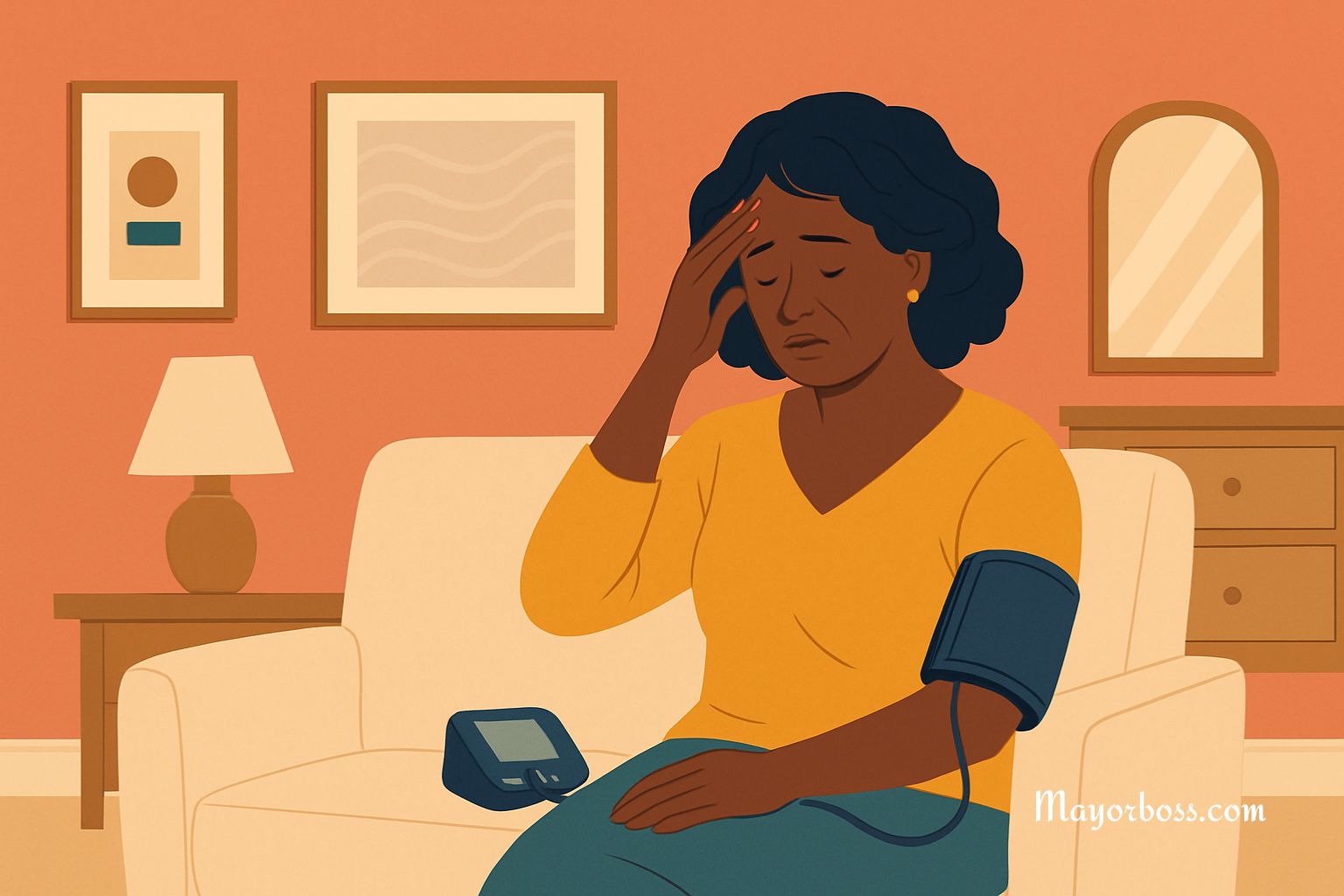Low Blood Pressure Symptoms Most People Miss
Low blood pressure, also called hypotension, happens when the force of the blood pushing against the walls of the arteries is too low. While it may sound like a good thing—especially compared to high blood pressure—it can still cause problems. In fact, some symptoms can be subtle and easy to overlook. Read on to learn the signs that many people miss, so you can better understand what your body may be trying to tell you.

What Is Considered Low Blood Pressure?
Doctors usually define low blood pressure as a reading lower than 90/60 mmHg. The first number (systolic) measures the pressure when your heart beats. The second (diastolic) measure is when your heart rests between beats. Not everyone with low numbers feels unwell, but for some people, it leads to symptoms that affect daily life.
Why Symptoms Are Often Missed
Low blood pressure symptoms can come on gradually. Some may feel mild at first or be blamed on other things like fatigue, stress, or hunger. Others may only appear when you stand up or change positions. Because of this, many people ignore the signs or don’t connect them to blood pressure.
Low Blood Pressure Symptoms
Here are the most commonly missed symptoms.
1. Dizziness or Lightheadedness
This is one of the most common signs. It often happens when you stand up too quickly. Your blood may not reach your brain fast enough, which causes you to feel off balance or faint. This condition is called orthostatic hypotension. If it happens regularly, it’s worth talking to a healthcare provider.
2. Blurry Vision
A sudden drop in blood pressure can cause your eyesight to blur. This is temporary, but it can be alarming if you don’t know the cause. It often goes away once your blood pressure levels out again.
3. Fatigue That Doesn’t Go Away
Feeling tired all the time—even after a full night’s sleep—can be a sign of low blood pressure. When your body isn’t getting enough oxygen and nutrients due to slower blood flow, it can leave you feeling drained.
4. Cold, Pale, or Clammy Skin
Low blood pressure can cause poor circulation. As a result, your hands or feet may feel cold or look pale. Your skin might also become clammy or sweaty, even if you aren’t hot.
5. Trouble Concentrating (“Brain Fog”)
If your brain isn’t getting enough oxygen-rich blood, your thinking may feel cloudy. You may have trouble focusing or feel mentally slow. This brain fog is easy to dismiss, but is often linked to blood pressure that’s too low.
6. Fainting or Feeling Like You Might Faint
Passing out is one of the more serious symptoms of low blood pressure. It means your brain didn’t get enough blood. Even if you haven’t actually fainted, feeling like you might is a warning sign that shouldn’t be ignored.
7. Nausea or Feeling Queasy
Low blood pressure can reduce blood flow to your digestive system, which may make you feel nauseated, especially after standing up or during physical activity. This can also affect your appetite.
8. Rapid or Shallow Breathing
When blood pressure drops, your body may try to make up for it by breathing faster. This helps bring more oxygen into the body, but it can leave you feeling short of breath even with light activity.
9. Depressed Mood or Irritability
While less commonly recognized, low blood pressure can affect your mood. The reduced blood flow can make you feel down, irritable, or even anxious. This connection is often missed or blamed on emotional stress.
When to See a Doctor
You should see a healthcare provider if:
- You often feel dizzy, faint, or tired for no clear reason.
- You notice cold or pale skin, especially in your extremities.
- Your blood pressure is consistently below 90/60 mmHg, even if you feel okay.
- You’ve fainted or had trouble thinking clearly.
Even if symptoms seem mild, they can signal that something in your body isn’t working as it should. Don’t ignore the signs.
What Causes Low Blood Pressure?
Low blood pressure can happen for many reasons. Some of the most common include:
- Dehydration
- Nutritional deficiencies (such as low vitamin B12 or iron)
- Certain medications (especially for high blood pressure or heart conditions)
- Endocrine disorders (like Addison’s disease or thyroid issues)
- Heart problems
- Infections or blood loss
How to Support Healthy Blood Pressure
If you have low blood pressure or its symptoms, here are a few tips to help manage it:
- Drink more water. Dehydration lowers blood volume, which drops pressure.
- Eat smaller, more frequent meals. Large meals can cause blood to pool in the digestive tract.
- Avoid alcohol. It can lower blood pressure further.
- Get up slowly. This gives your body time to adjust.
- Wear compression stockings. These can help push blood back toward the heart.
